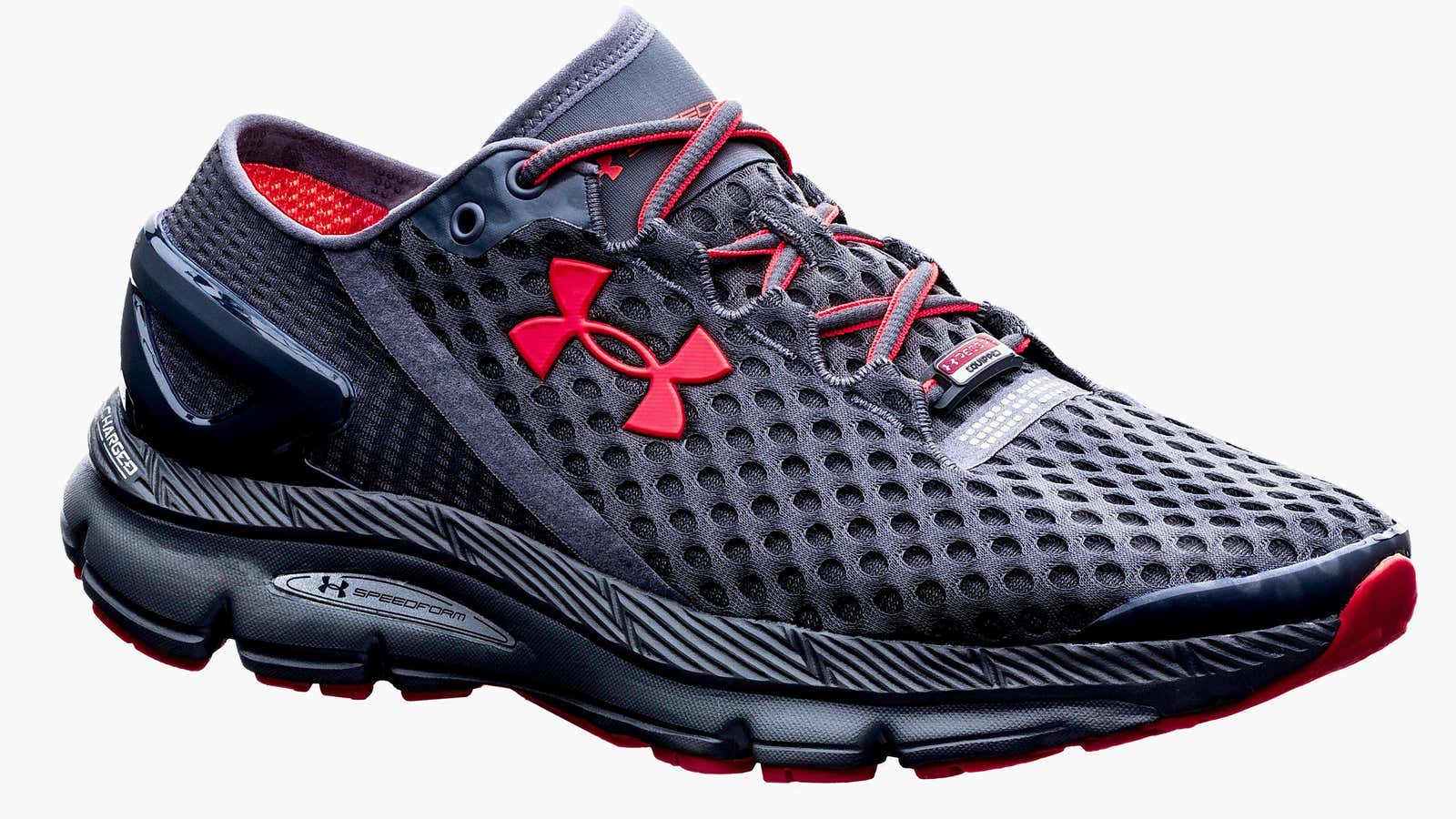We’re just a few days into 2016, but it already looks to be a big year in the battle among sportswear brands to track your every step.
While products such as the Apple Watch and Fitbit wristbands have a strong hold on the connected-fitness market—Fitbit’s app topped Apple’s list of free downloads on Christmas—the companies making the footwear and apparel that people are donning for their workouts want their own share. And they certainly have a good entry point: Why put on a separate device when your sneakers could already have some of the same functions built in?
Under Armour announced on Jan. 5 at the Consumer Electronics Show in Las Vegas that it will release its first smart sneaker on Feb. 29. Retailing for $150, the Speedform Gemini 2 can monitor a runner’s distance, pace, and stride length, and it can tell the difference between running and walking so it save battery life when not being actively used for a workout. Under Armour says owners can expect to get 450 miles of use out of the shoes before their life is up.
The company also launched a bundle of other products that make up a $400 connected-fitness system it’s calling HealthBox, including wireless headphones and a scale equipped with Bluetooth and Wi-Fi. These gadgets, also available separately, could help Under Armour grow its digital health and fitness community, the world’s largest, with more than 160 million members spread across its apps, according to CEO Kevin Plank. And to make use of all that data, Under Armour is partnering with IBM, whose super-powerful Watson computer will be able to provide individual coaching via the UA Record app based on what has worked for people similar to you.
The point of all this, of course, is sales. As Plank said in a recent interview, the more Under Armour can get people to exercise, the more stuff they’ll buy, and Under Armour isn’t the only company that sees value in a bigger digital footprint.
Also at CES, sneaker company New Balance said it’s launching a technology division that will partner with companies such as Intel and Google to create wearables and add a new digital layer to its brand. The initial three product categories it’s developing will focus on devices, including a smart watch; embedded technology, or clothing and footwear with integrated sensors; and performance-analysis equipment, such as a micro-fob that “senses, analyzes and provides feedback on the athlete’s performance.” It’s going to be some time before any of these items hit the market, however. The smart watch, which is the first product New Balance will release, is planned for the 2016 holiday season.
While Nike hasn’t made any recent announcements of upcoming smart products—it essentially shut down its wearables program in 2014 when it scrapped Fuelband—it recently received a patent for a new system to record and display a user’s physical activity. It could be looking to improve or expand its existing Nike+ system, which uses a standalone sensor that can be inserted into a sneaker and syncs with a Nike app.
The push into connected fitness is more than a gimmick. While connected sneakers like Nike’s aren’t completely new, they haven’t yet caught on the way the Fitbit has. But the market is there: Fitness is increasingly becoming a part of people’s lifestyles, to the point that Morgan Stanley believes the global market for activewear will add $83 billion in sales by 2020 as sports and exercise become ever more popular, especially in China.
At the same time, the growing “internet of things” is ushering in another type of lifestyle shift, one where people expect technology-enabled systems to help them lead better, more data-driven lives. As wearables take off, improved smart sneakers could satisfy both these growth areas.
Under Armour’s CEO and founder, Kevin Plank, said in a statement, ”For 20 years, Under Armour has changed the way athletes dress and now we will change the way athletes live.”
There’s going to be a lot of competition for those athletes and their Wi-Fi connections in the year ahead.
